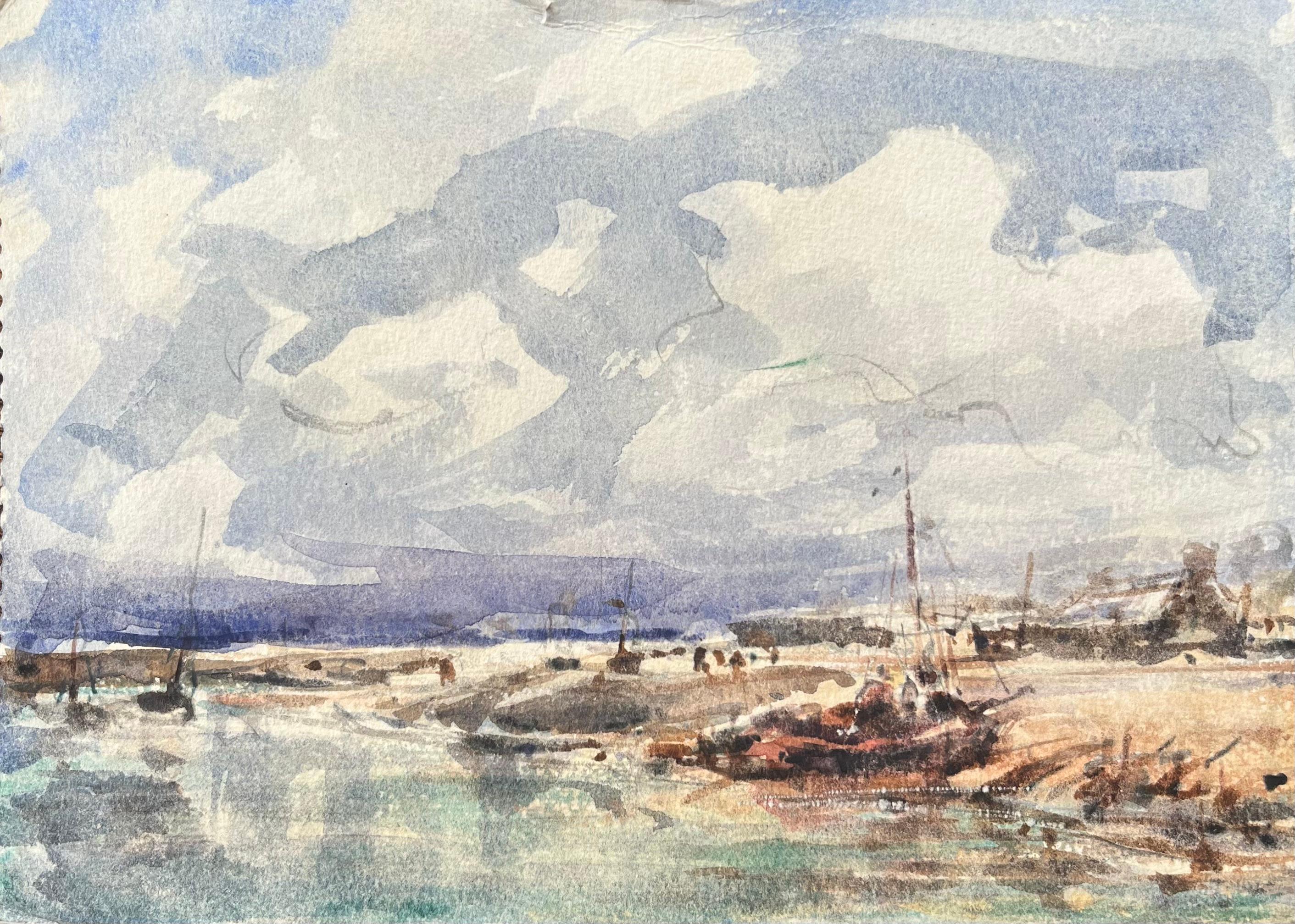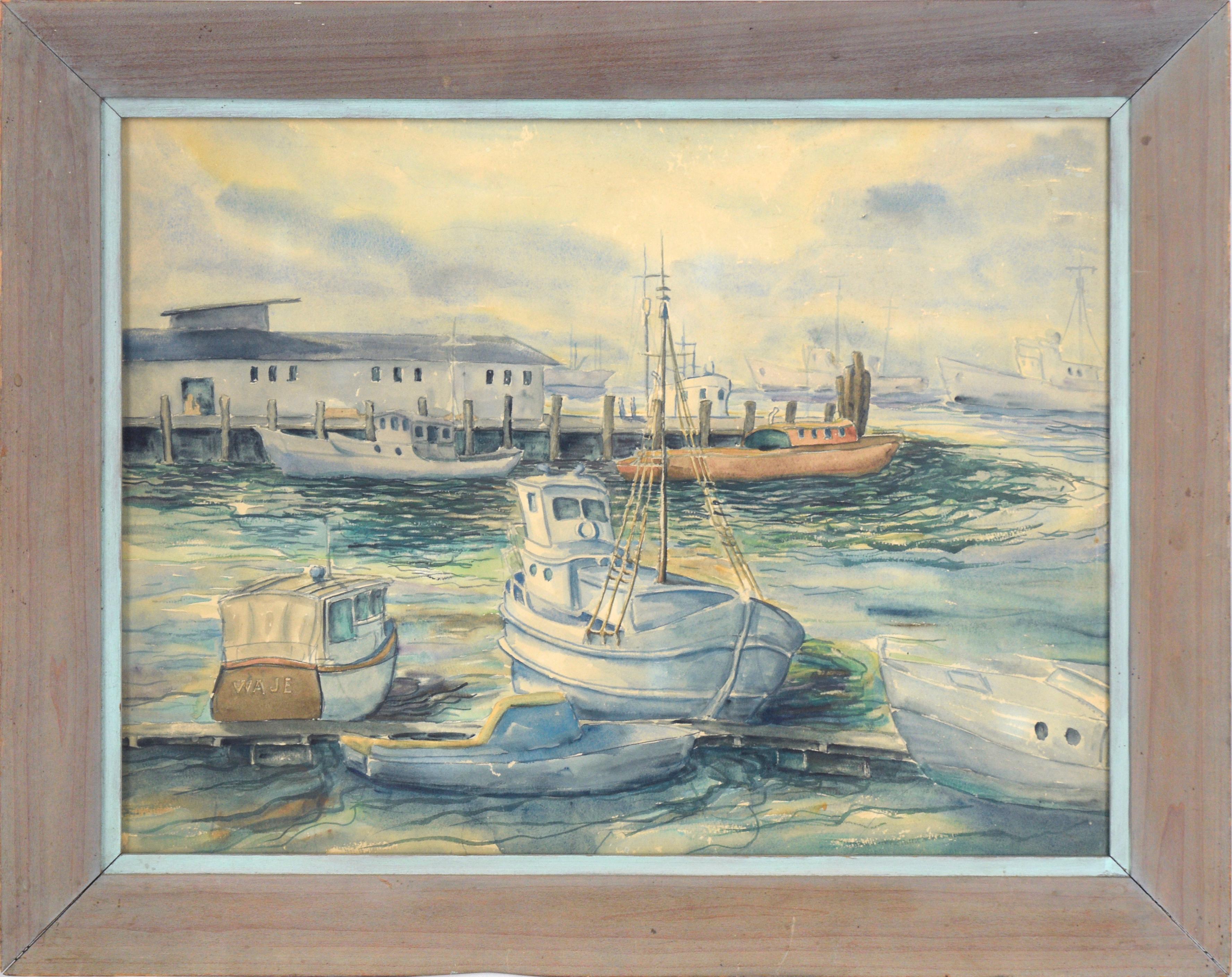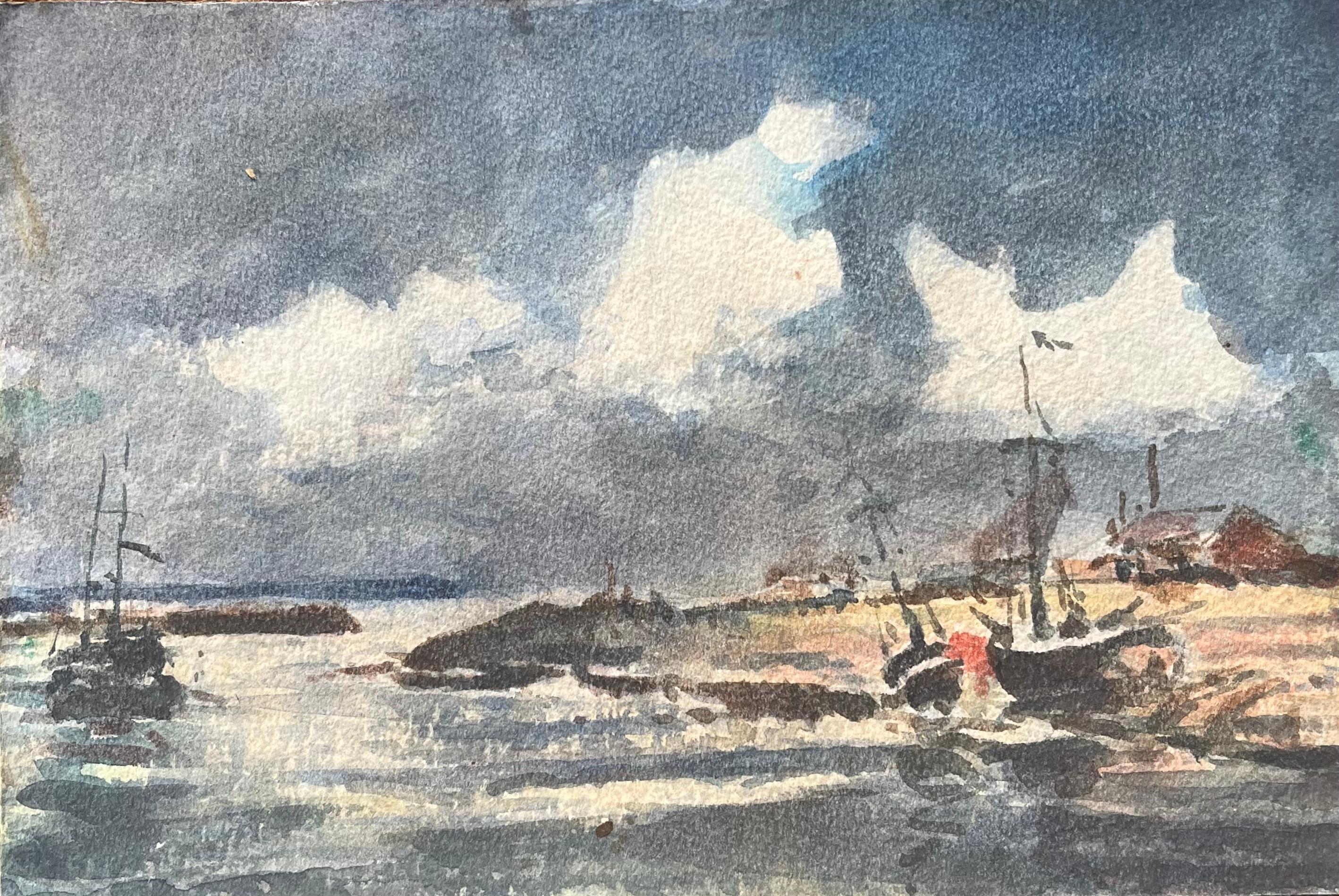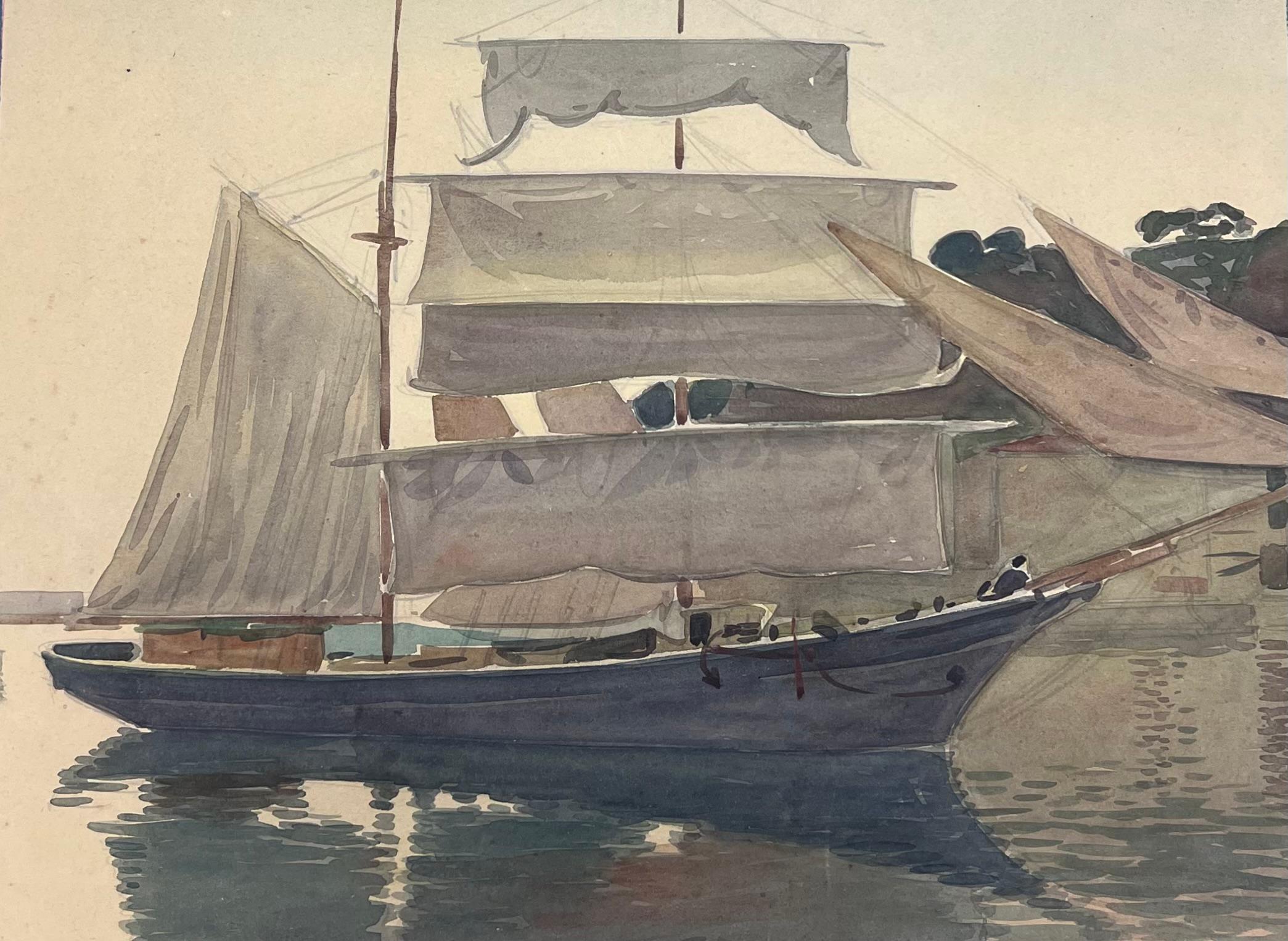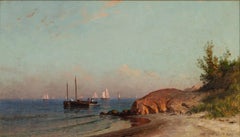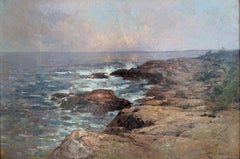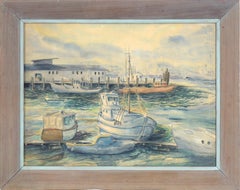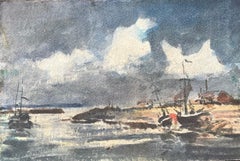Items Similar to "Gray Morning" James MacMaster, Scottish Seascape, Marine Ship Landscape
Want more images or videos?
Request additional images or videos from the seller
1 of 9
James MacMaster"Gray Morning" James MacMaster, Scottish Seascape, Marine Ship Landscape
$540
$1,80070% Off
£406.30
£1,354.3370% Off
€469.28
€1,564.2870% Off
CA$763.16
CA$2,543.8770% Off
A$828.15
A$2,760.4970% Off
CHF 438.84
CHF 1,462.8170% Off
MX$10,156.81
MX$33,856.0270% Off
NOK 5,430.67
NOK 18,102.2370% Off
SEK 5,131.69
SEK 17,105.6470% Off
DKK 3,503.45
DKK 11,678.1570% Off
About the Item
James MacMaster
Gray Morning
Signed and titled lower left
Watercolor on paper
10 1/4 x 14 inches
Provenance:
Private Collection, New Jersey
- Creator:James MacMaster (1856 - 1913, Scottish)
- Dimensions:Height: 16 in (40.64 cm)Width: 19.5 in (49.53 cm)
- Medium:
- Period:
- Condition:
- Gallery Location:New York, NY
- Reference Number:1stDibs: LU1841212158042
About the Seller
5.0
Platinum Seller
Premium sellers with a 4.7+ rating and 24-hour response times
Established in 2022
1stDibs seller since 2022
122 sales on 1stDibs
Typical response time: 1 hour
- ShippingRetrieving quote...Shipping from: New York, NY
- Return Policy
Authenticity Guarantee
In the unlikely event there’s an issue with an item’s authenticity, contact us within 1 year for a full refund. DetailsMoney-Back Guarantee
If your item is not as described, is damaged in transit, or does not arrive, contact us within 7 days for a full refund. Details24-Hour Cancellation
You have a 24-hour grace period in which to reconsider your purchase, with no questions asked.Vetted Professional Sellers
Our world-class sellers must adhere to strict standards for service and quality, maintaining the integrity of our listings.Price-Match Guarantee
If you find that a seller listed the same item for a lower price elsewhere, we’ll match it.Trusted Global Delivery
Our best-in-class carrier network provides specialized shipping options worldwide, including custom delivery.More From This Seller
View All"Sailboats in a Bay" John Ross Key, American Landscape, Skyscape, Maritime Scene
By John Ross Key
Located in New York, NY
John Ross Key
Sailboats in a Bay
Signed lower right
Oil on canvas
15 x 26 inches
Provenance
Private collection, St. Simon's Island, Georgia
Private Collection, by descent
Private Co...
Category
1870s Academic Figurative Paintings
Materials
Oil, Canvas
Bateau au Quai (Docked Sailing Vessel at Low Tide), Frank Myers Boggs, Landscape
By Frank Myers Boggs
Located in New York, NY
Frank Myers Boggs
Bateau au Quai (Docked Sailing Vessel at Low Tide)
Signed lower left
Oil on canvas
15 x 21 1/2 inches
Provenance:
David Findlay Galleries, New York
Charles R. Brown Fine Art, Locust Valley, New York
The Impressionist Frank Myers Boggs spent his formative and mature years abroad and in 1923 became a naturalized French citizen. He was born in Springfield, Ohio, but moved as a young boy to New York, where his father was a newspaper executive. The artist began his career at the age of seventeen as a wood engraver for Harper’s, preparing illustrations for Harper’s Weekly and for an American edition of the works of Charles Dickens. It has also been stated that he studied with the portraitist John Barnard Whittaker (1836–1926).
After working at Niblo’s Garden in New York with a scene painter named Vauglin, Boggs went to Paris to study scene painting. On his arrival there in 1876, he was unable to find anyone to instruct him in this field and instead entered the École des Beaux-Arts. Realizing that Boggs was not well suited to painting figurative subjects, his teacher Jean-Léon Gérôme (1824–1904) advised him to try some outdoor landscapes. Between 1877 and 1881, he concentrated on marine...
Category
Late 19th Century Impressionist Landscape Paintings
Materials
Canvas, Oil
"A Devon Harbor" William Lee Hankey, Coastal Town Seascape with Boats, England
By William Lee Hankey
Located in New York, NY
William Lee Hankey
A Devon Harbor
Signed lower right; titled on the stretcher
Oil on canvas
24 x 29 inches
William Lee Hankey (1869–1952) RWS, RI, ROI, RE, NS[clarification needed] ...
Category
Early 20th Century Impressionist Landscape Paintings
Materials
Canvas, Oil
$7,600 Sale Price
20% Off
"Coastal Scene" George Henry Smillie, Hudson River School, Rocky Coast, Cloudy
By George Henry Smillie
Located in New York, NY
George Henry Smillie
Coastal Scene
Signed lower right
Oil on canvas
20 x 30 inches
Provenance
Collection of Sylvia and Saverio Giammalva, Houston, Texas
The career of George Smill...
Category
1880s Hudson River School Figurative Paintings
Materials
Oil, Canvas
"Marblehead Harbor, Grey Day" John Rettig, 1919 Marine Landscape Work
Located in New York, NY
John Rettig
Marblehead Harbor, Grey Day, 1919
Signed and dated lower right
Oil on academy board
15 x 18 inches
Dubbed as the “Wizard of Scenic Creation”, John Rettig was best known...
Category
1910s American Impressionist Figurative Paintings
Materials
Oil, Illustration Board
"Ship Portrait, " William Edward Norton, Seascape Maritime Painting, New England
By William Edward Norton
Located in New York, NY
William Edward Norton (1843 - 1916)
Ship Portrait, 1876
Oil on canvas
10 x 16 inches
Signed and dated lower left
Born in Boston, William Norton became a noted marine painter, stirred by his youth when he sailed on family-owned ships. He studied at the Lowell Institute in Boston, and with George Inness, and then established a studio in Boston.
In the early 1870s, he went to Paris and became a student with Chevreuse and A. Vollon, and then he settled in London where he exhibited throughout the last quarter of the 19th century. His reputation there was based on his scenes of the Thames River, and ocean and coastal views.
In 1901, he and his wife returned to the United States and settled in New York City. He also painted at Monhegan Island, Maine, where a treacherous ledge on the southern side of the island is named "Norton's Ledge" for him.
He was a member of the Boston Art Club with whom he exhibited from 1873 to 1909. He also exhibited with the Pennsylvania Academy, the Royal Academy in London, the Paris Salon, the 1893 Chicago Exposition...
Category
1870s Hudson River School Landscape Paintings
Materials
Canvas, Oil
You May Also Like
Seascape with Boats Storm Coming - Scottish 19thC exh impressionist oil painting
By Joseph Henderson
Located in Hagley, England
This dramatic Scottish Impressionist 19th century oil painting is by noted Scottish artist Joseph Henderson. Painted in 1876 it was exhibited at the Royal Scottish Academy the same y...
Category
1870s Impressionist Landscape Paintings
Materials
Oil
French Impressionist Watercolor of a Harbor Scene with Boats Moored on the Shore
Located in Cirencester, Gloucestershire
Title: French Impressionist Watercolor of a Harbor Scene with Boats Moored on the Shore
By Maurice Mazeilie (French 1924-2021)
Medium: Watercolor on paper, unframed
Size: 7 x 9.75 in...
Category
20th Century Impressionist Drawings and Watercolor Paintings
Materials
Watercolor
Boats at the Harbor - Nautical Seascape
Located in Soquel, CA
Watercolor of boats at the docks by Clarence Albert Taubenhein (American, 1902-1989). In the foreground, a few boats are docked at a pier. The wat...
Category
Mid-20th Century Modern Landscape Drawings and Watercolors
Materials
Paper, Watercolor
French Impressionist Watercolor of Boats on a Stormy Coast
Located in Cirencester, Gloucestershire
Title: French Impressionist Watercolor of Boats on a Stormy Coast
By Maurice Mazeilie (French 1924-2021)
Medium: Watercolor on paper, unframed
Size: 7.5 x 11 inches (Height x Width)
...
Category
20th Century Impressionist Drawings and Watercolor Paintings
Materials
Watercolor
Vintage Southern California Seascape with Boats -- "Foggy Morn"
Located in Soquel, CA
Wonderful moody vintage Southern California seascape with boats titled "Foggy Morn" by Richard Soderman (American, 20th Century), 1975. Presented i...
Category
Late 20th Century Impressionist Landscape Paintings
Materials
Canvas, Oil
Sailing Ship at Anchor in the Grey Waters of the Mediterranean French Painting
Located in Cirencester, Gloucestershire
Sailing Ship
Tony Minartz (French, 1873 - 1994)
signed watercolour on artist paper
painting : 12.75 x 17 inches
Provenance: private collection in the South of France,
Condition: v...
Category
Mid-20th Century Post-Impressionist Landscape Paintings
Materials
Watercolor
More Ways To Browse
19th Century Seascape
New Jersey 19th Century Painting
19th Century Seascape Paintings
19th Century Marine Painting
19th Century Ship Paintings
19th Century Marine Art
Scotland Seascape
Marine Art Scottish
Venetian Landscape Paintings
Marin County
New Orleans Street Scene Paintings
Royal Oil Painting
Works In Progress
Antique Harbor Paintings
Columbian Exposition
Window Landscape Art
Dunes Painting
1970s French Post Impressionist Painting

